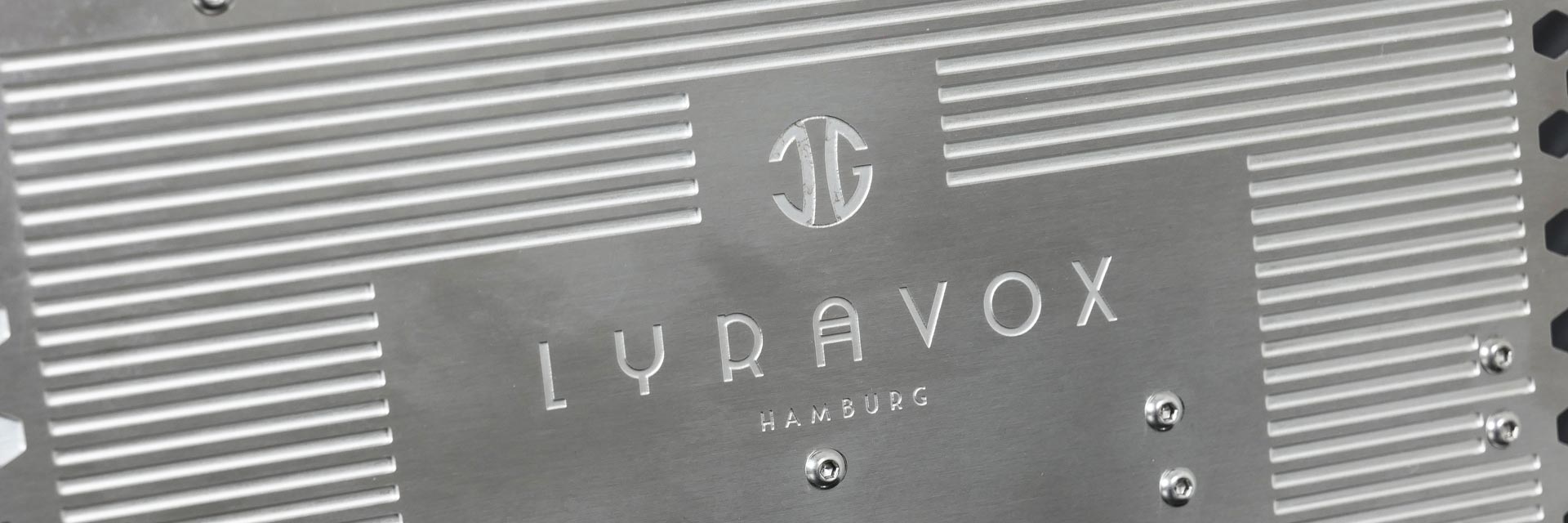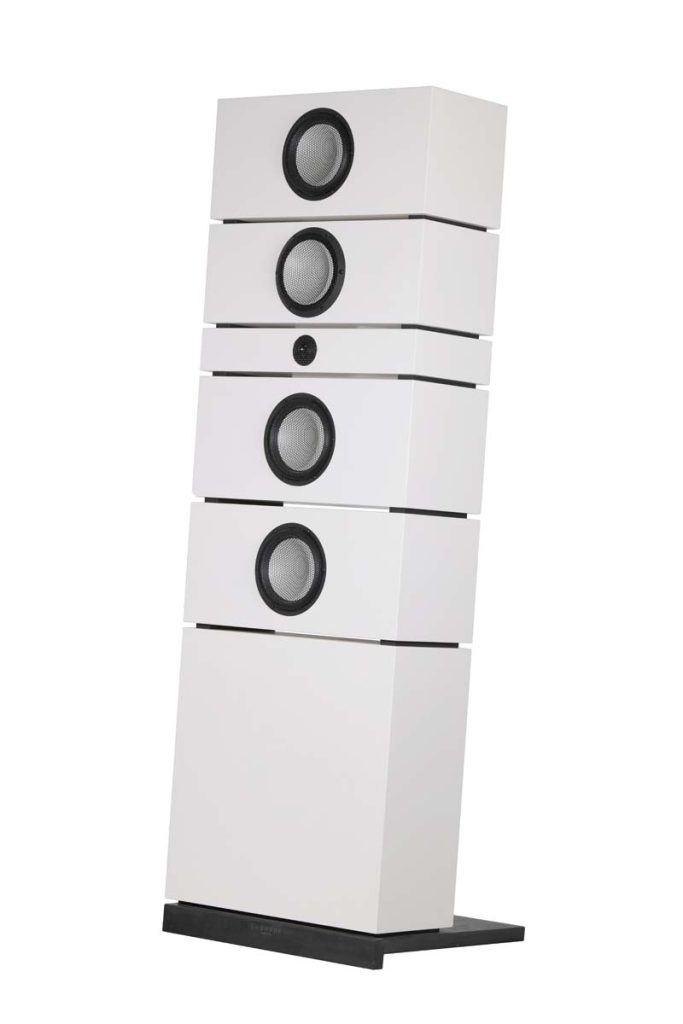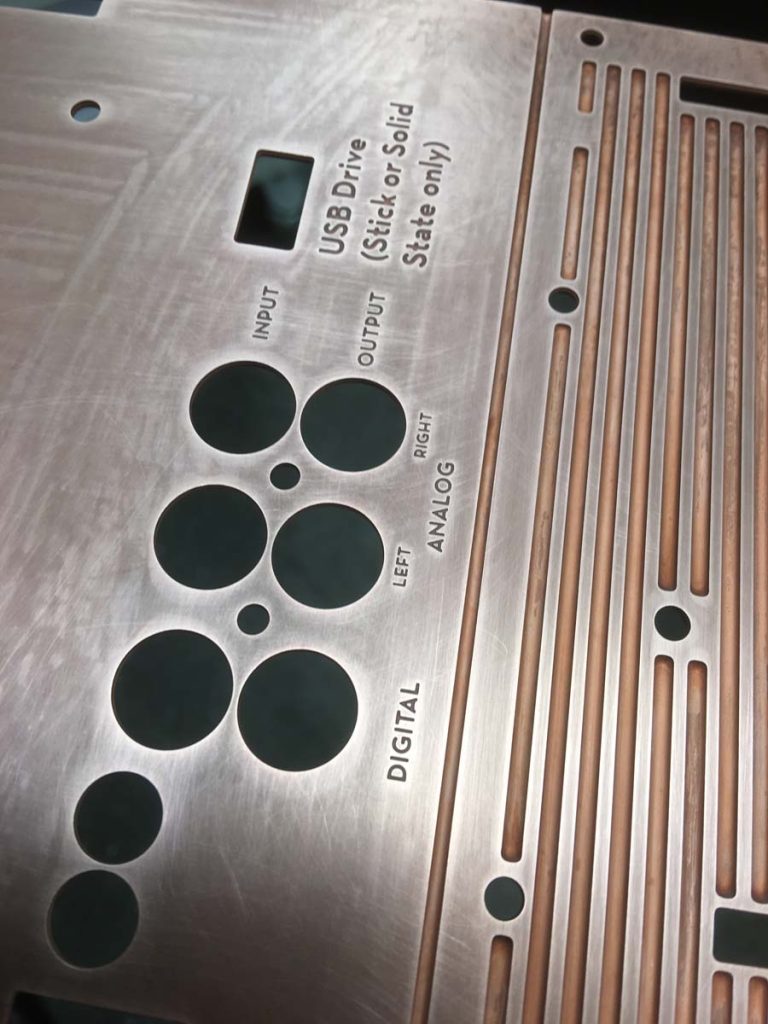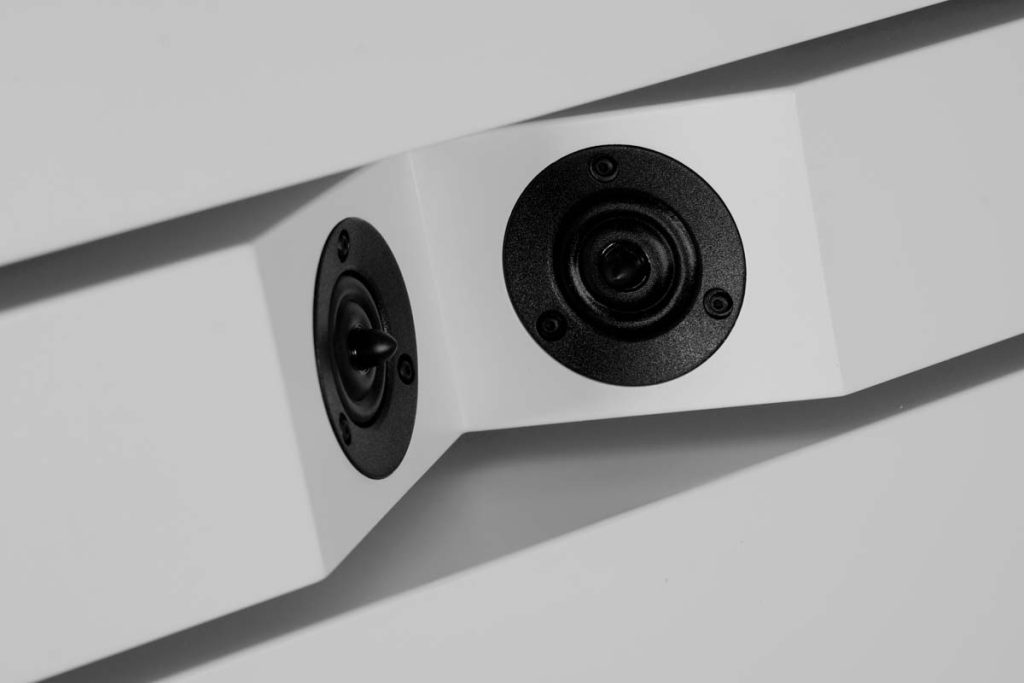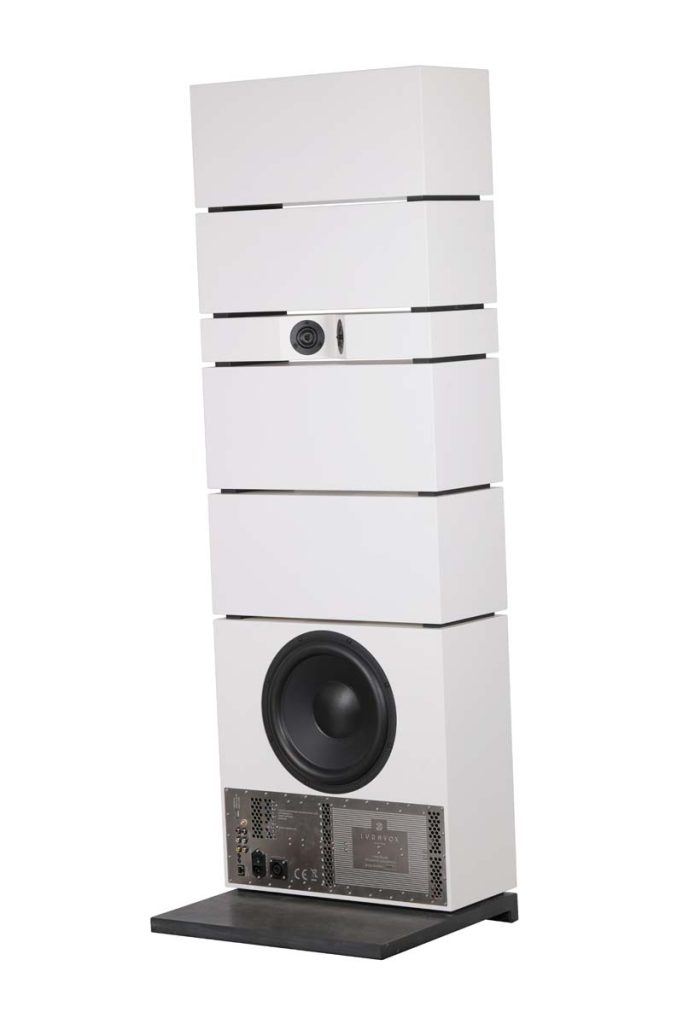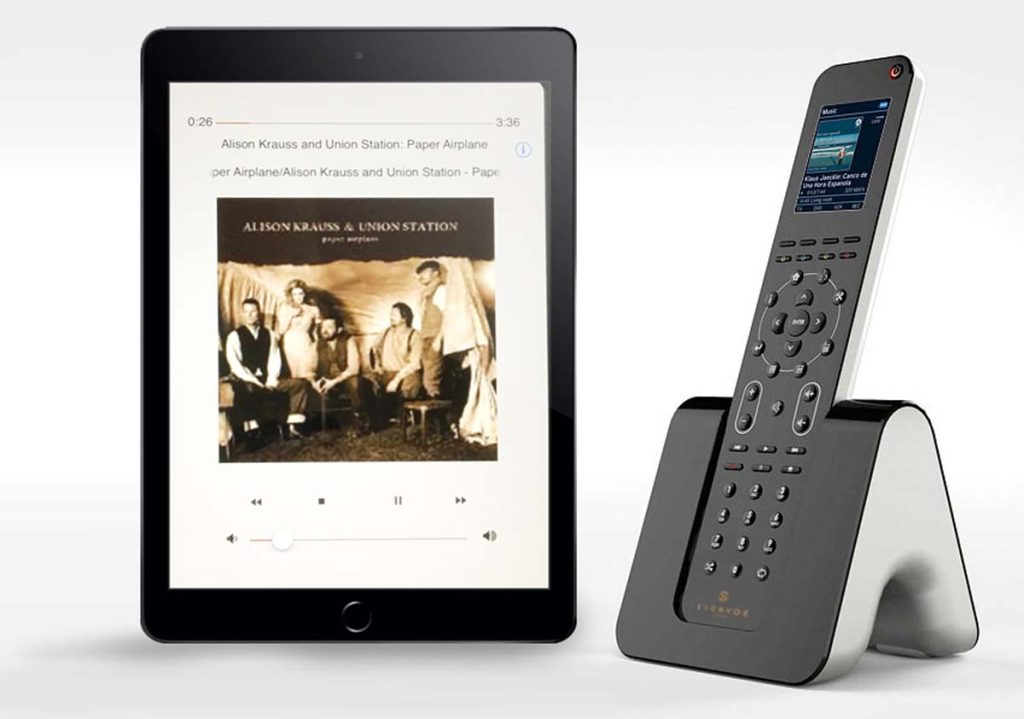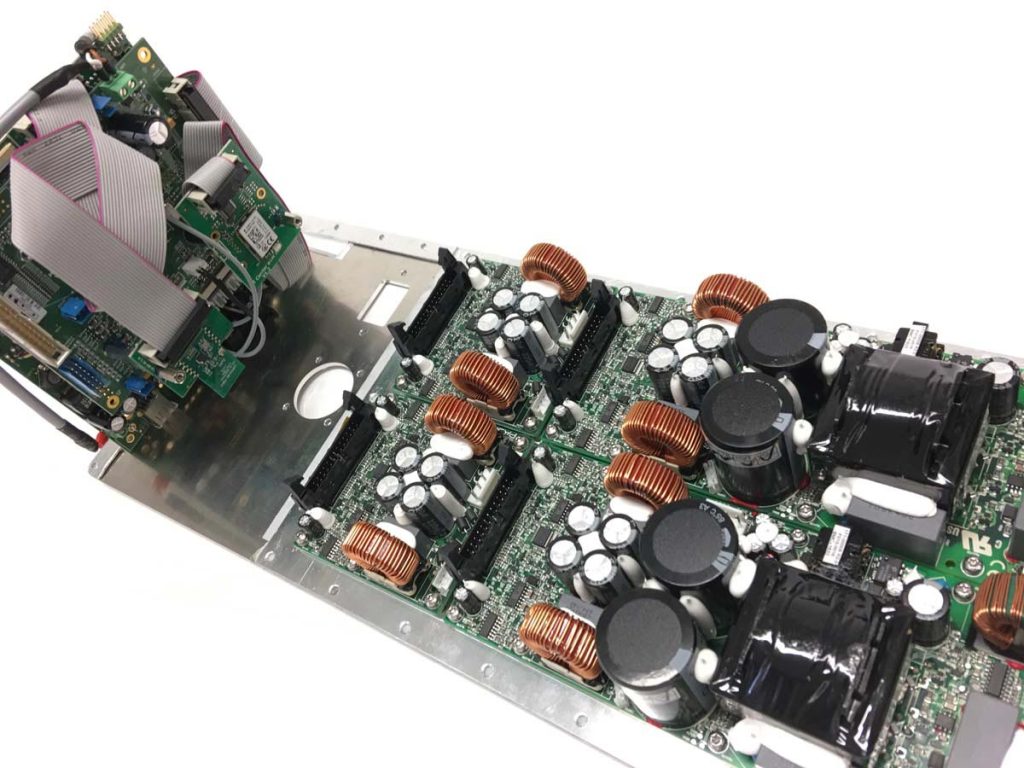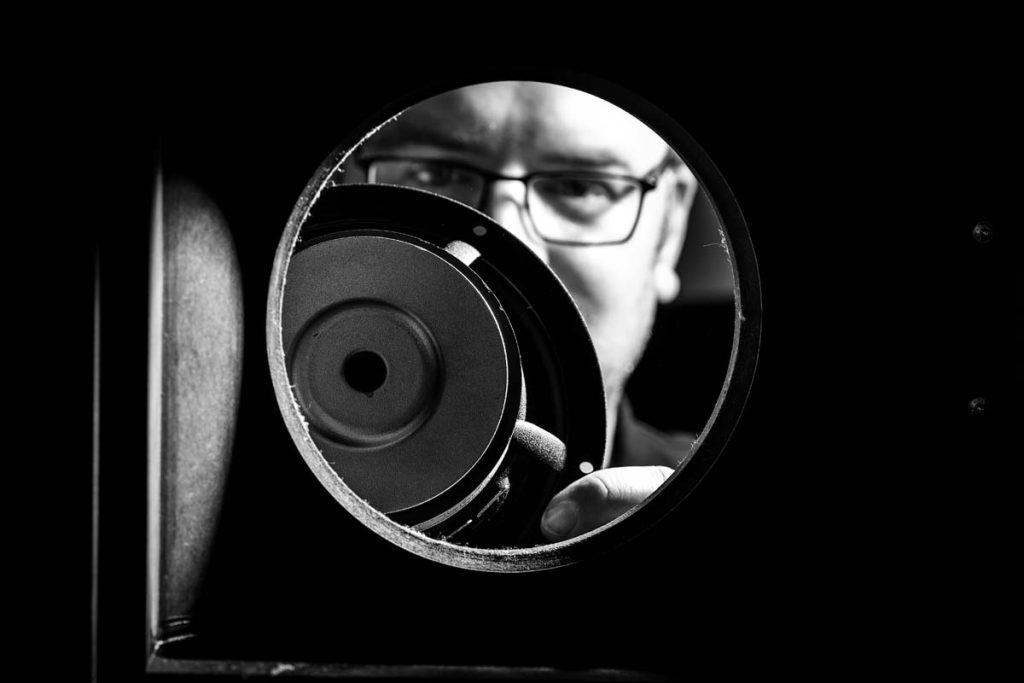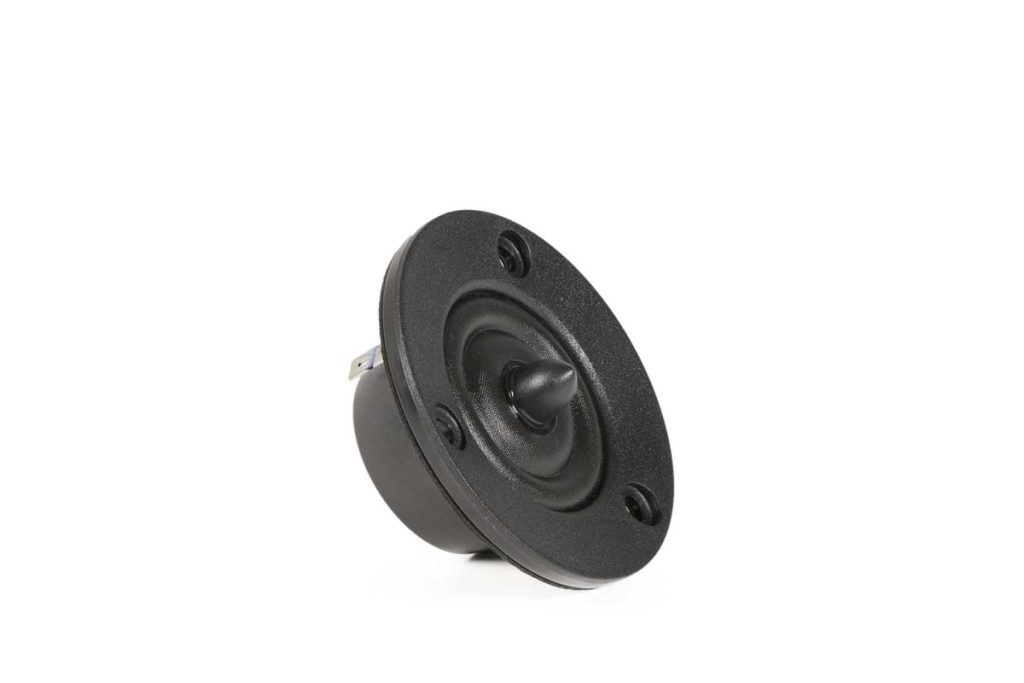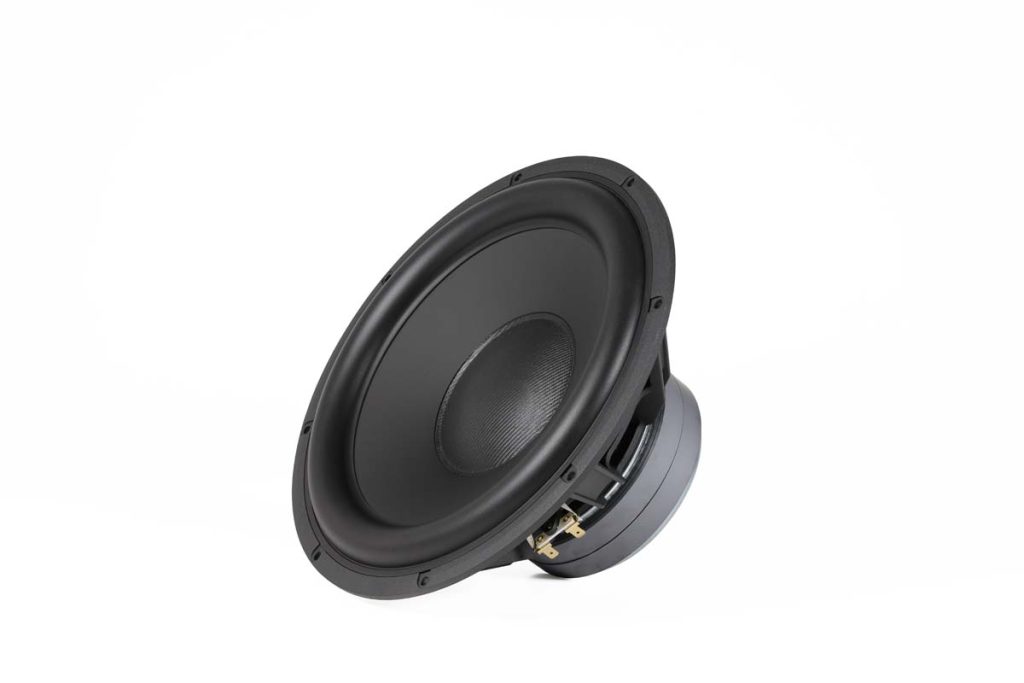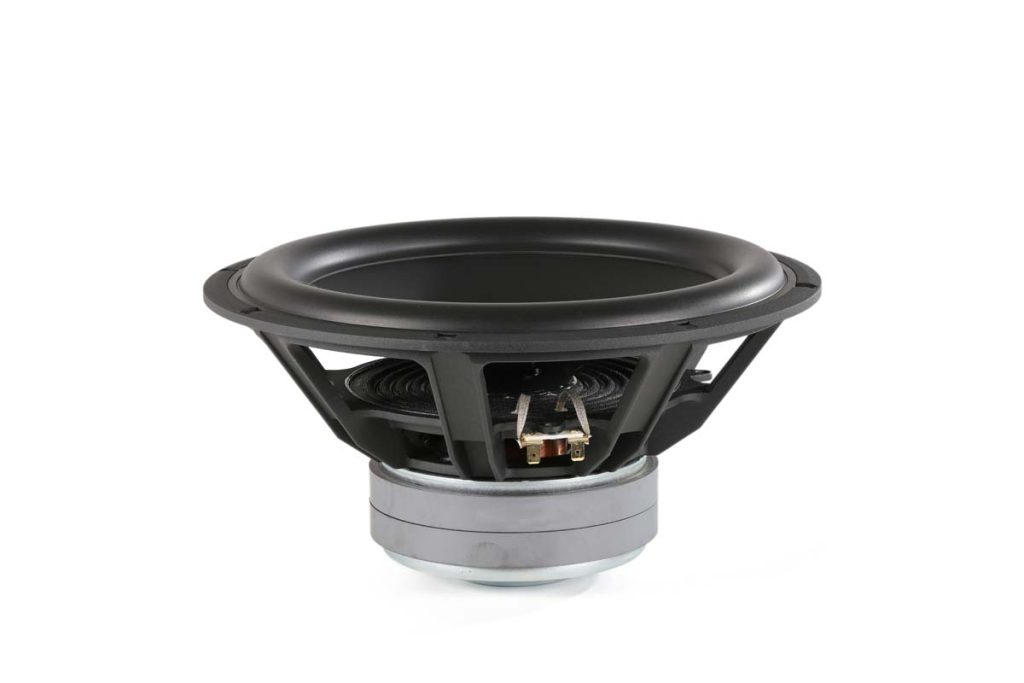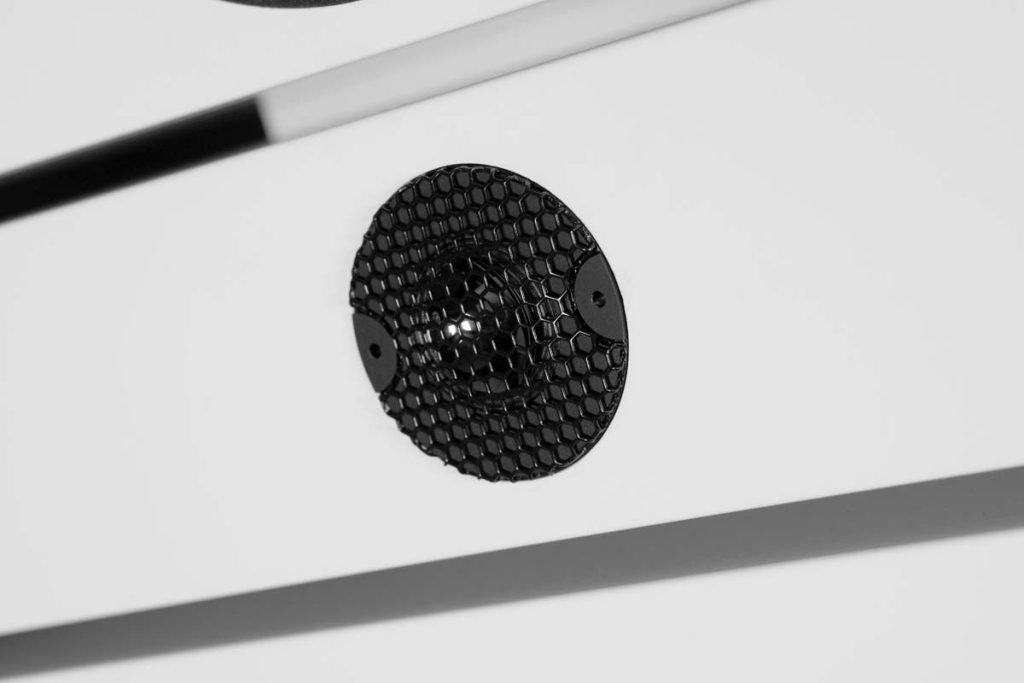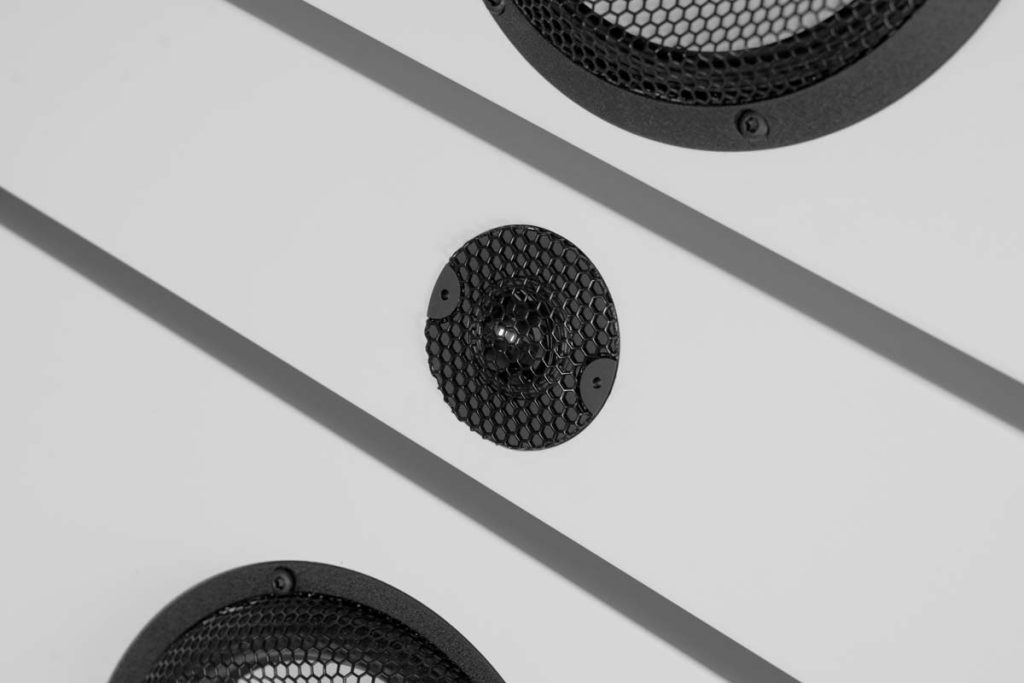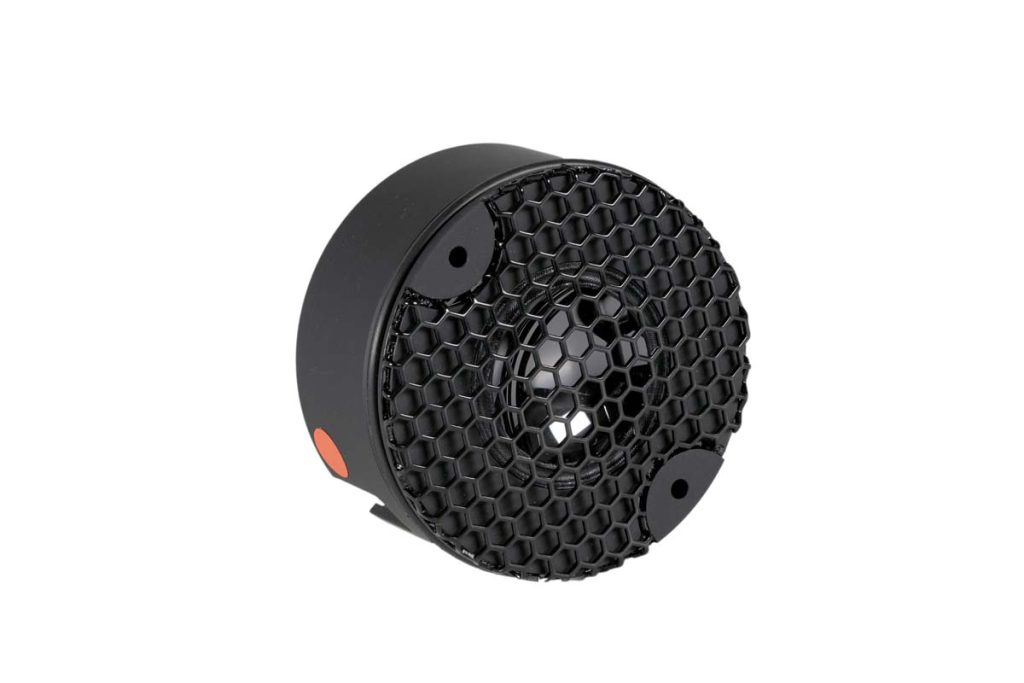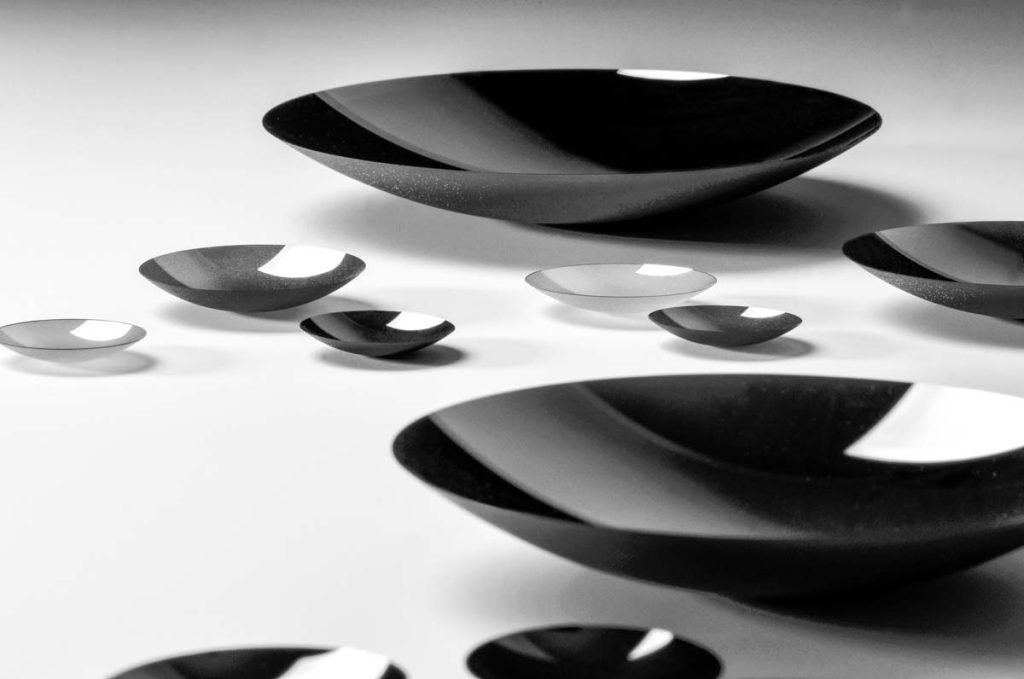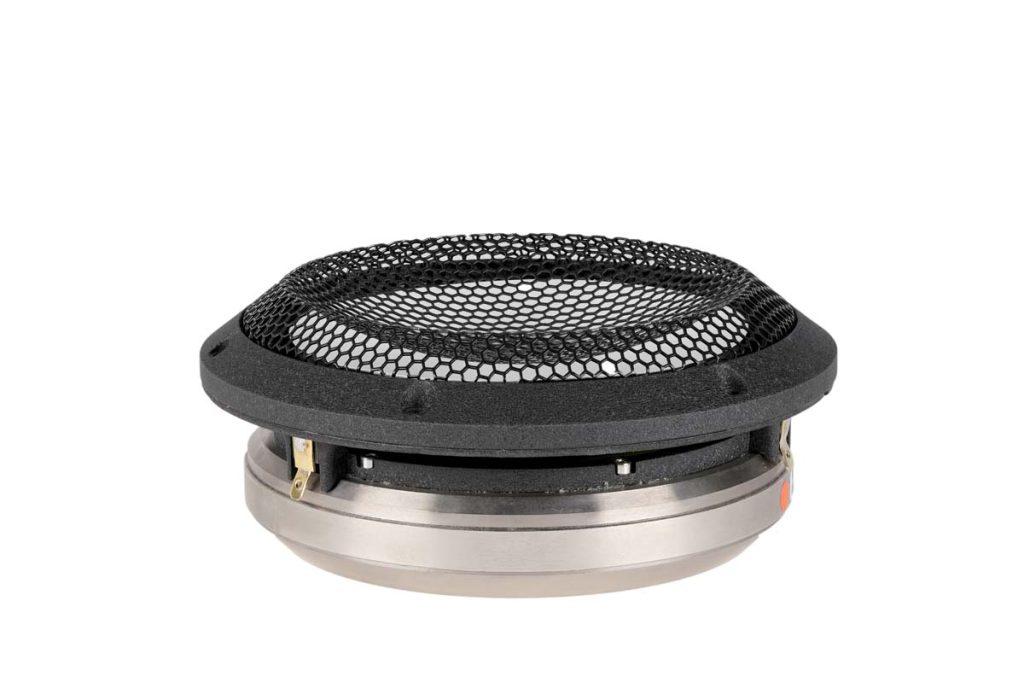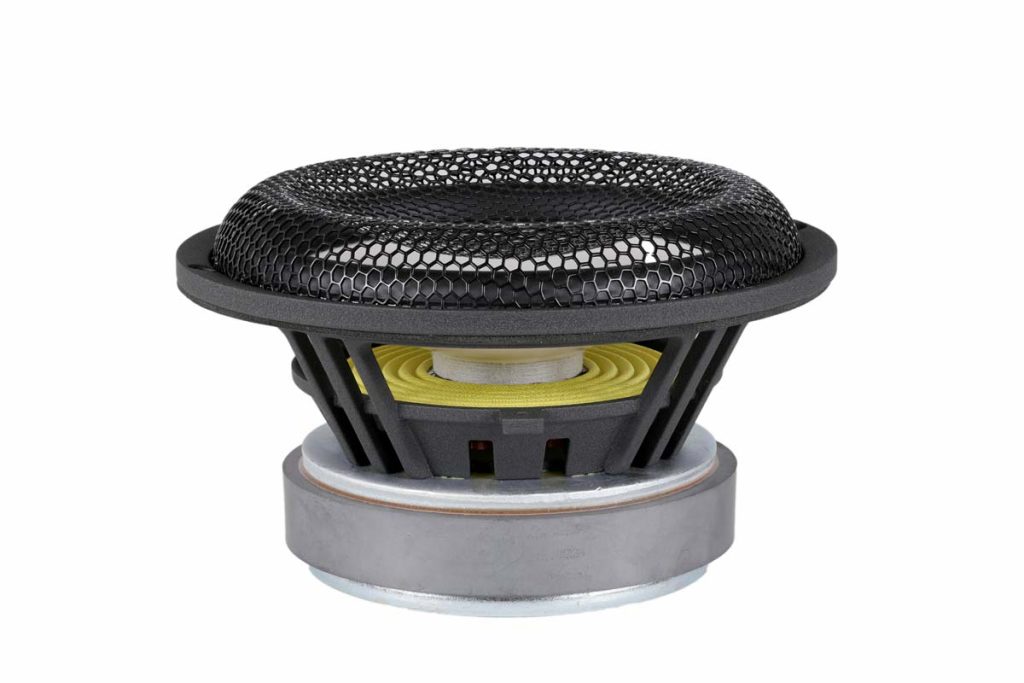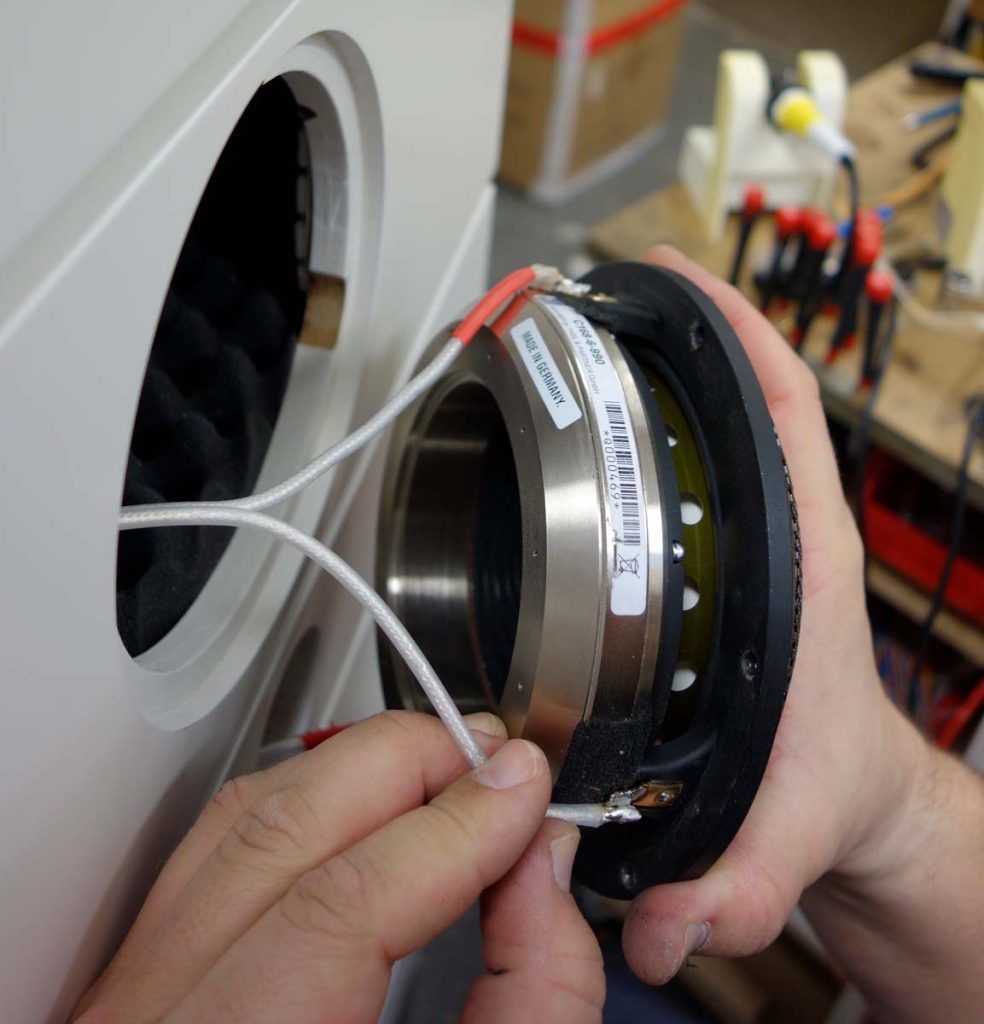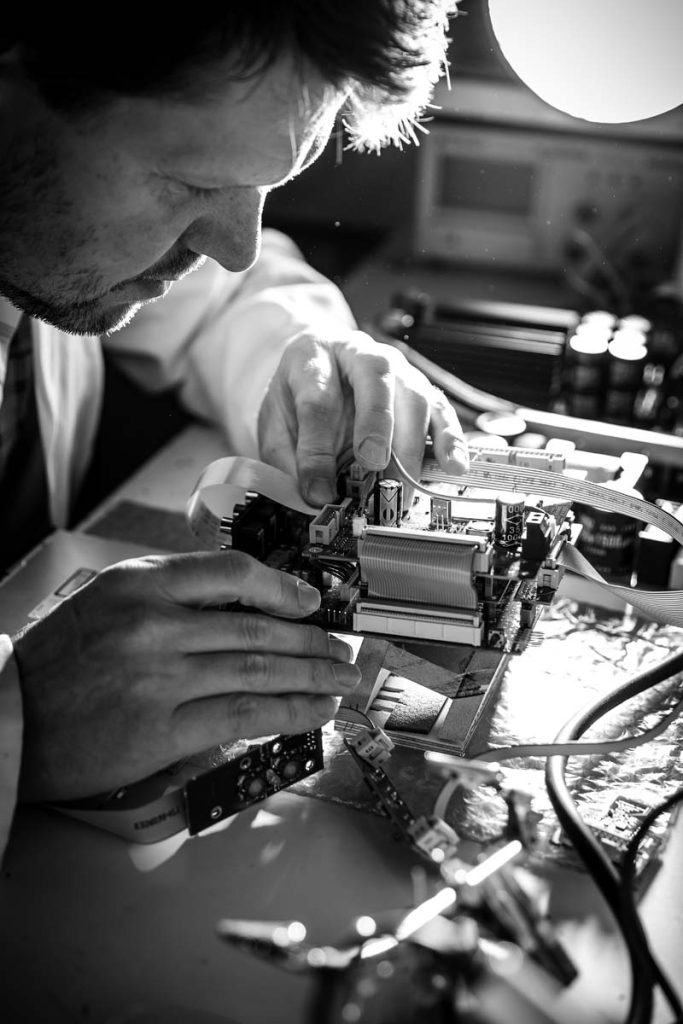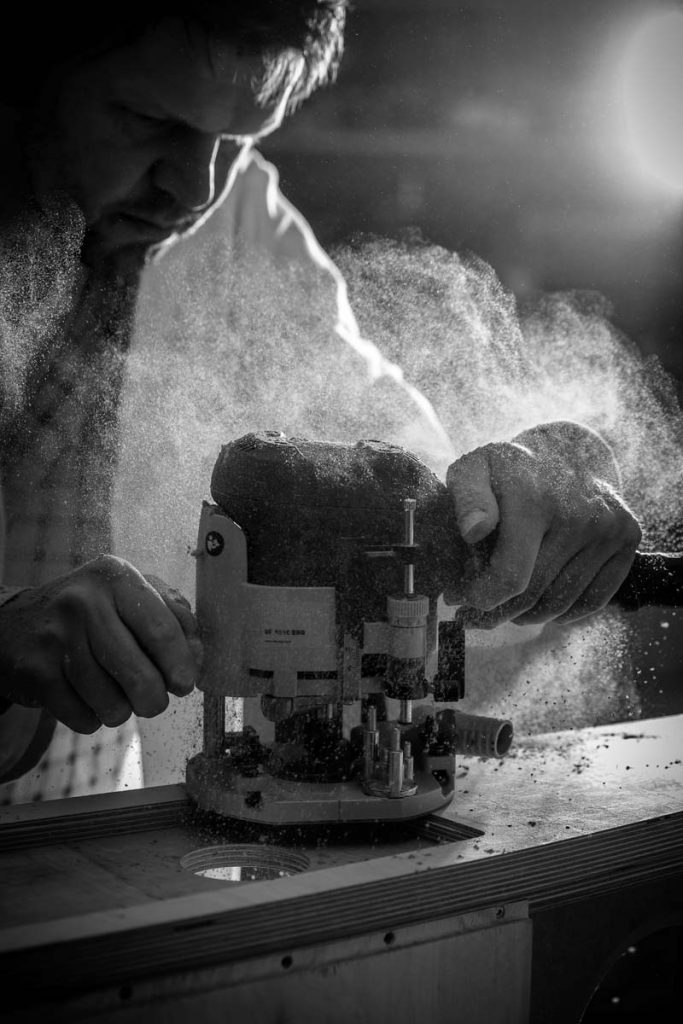Musical Superconductor
The Lyravox Karl is no loudspeaker. It is much, much more. Anyone lucky enough to get one doesn’t need anything else except space and an Internet connection.
In the old days, when everything audio was better (ahem), super speakers still had impressive names, like Concorde or Titan, and commanded your attention before any sound came out of them. But today? Standing before me in the listening room stood two white towers, wider than they were deep, and tilted backward ever so slightly. Each monolith had four ceramic chassis plus a diamond tweeter visible from the front — a rather conventional loudspeaker design — and answered to the somewhat uninspiring name of Karl.
Upon closer inspection, however, I had to admit that my initial assessment had definitely been hasty. I could see through both Karls, which are actually one (more on that later) as each “tower” consists of six individual and acoustically separate modules. Looking at the back, I noticed the rather fat bass driver built into each of the lowest sections. Two more rear-facing tweeters were also discreetly beaming “crisscross” into the room.
“But hang on,” I thought to myself, “where’s the rest of the system hiding?” There were far fewer cables running into the two Karl towers than expected…
The reason for my confusion suddenly became clear: the lateral thinkers at Lyravox, who are all about unusual designs, hadn’t provided our Editorial team with a pair of loudspeakers, but rather an exceptionally smart all-inone system. A handsome singing and dancing all-rounder with the guarantee of exceptional sound quality. Thanks to an integrated connection to streaming services such as Qobuz and Tidal, any music lover lucky enough to call a Karl their own no longer has to fiddle with any of those silver or black disks. However, if they insist, and have some rare gems or bizarre specimens lurking in their collection, then there are high-level inputs ready and eager to welcome external sources, such as SACD players and phono preamplifiers, into the Karl universe.
It’s a nice addition, but comparatively of little importance for relaxed listening enjoyment. And I say that as a true advocate of physical music media. You see, with Karl, Lyravox has managed to bring these worlds together: the actively driven loudspeaker section (see technical box) works at super speaker levels and can easily keep up with the world’s best. But for a system price of around EUR 50,000 that’s to be expected. The streaming section’s almost self-explanatory operation is a joy, providing quick and easy access to your choice of music. And, if for some reason the Internet’s music providers don’t have what you’re looking for, then perhaps your hard drive has precisely the material to suit your mood.
Admittedly, when I was getting to know Karl, just this once I decided not to reach first for my reliable collection of well-known test tracks, but instead to embark on a journey of discovery. On Qobuz, for example, I made some selections from a section devoted to film soundtracks packed with brandnew releases, including the soundtrack to the recently released action-gangster flick Oceans 8, an excellent collection of hot soul tracks, subtle groovy jazz-bar numbers, and other atmospheric tunes. “How will Karl get on?”, I wondered. The answer: with cinematic authority, a gripping sense of presence, and extreme clarity. Unfortunately I can’t comment on its level stability, as my ears got overloaded long before the built-in power amplifiers did, having previously blow-dried my trouser legs with distortion-free disco-volume music.
However, Karl von Lyravox — as I’ve decided to call him — is the polar opposite of a simple party machine. In 2018 we like to indulge ourselves with high-resolution source material, rave about hi-res and DSD, etc., but we forget that quite a lot remains possible with the 44.1 kHz data rate of conventional CDs. Karl was a pleasure to listen to even without any fine-tuning (some truly unbelievable feats could be achieved in the depths of an “expert menu,” but I didn’t dabble with that), demonstrating confident depth and breadth scaling, sounding as naturally three-dimensional as you would expect from compact speakers with coaxial drivers, and remaining quite homogeneous and coherent even while providing a wealth of detail. In particular, Karl also proved to be great at room volume, making it suitable for apartments. A truly high-end device should still sound amazing even if you’re not listening at stadium-level volume, and Karl does.
It’s hard to imagine that any song could give you more goosebumps than “The Boy Who Wouldn’t Hoe Corn” from Alison Krauss & Union Station: hobo bluegrass with new-country appeal, a banjo recorded with extreme presence, delicate harmonies, pure emotion, and profound lyrical content. It has it all, and listening to it through the Karl made the hairs on the back of my neck stand up. For example, in the contemplative up-tempo ballad “The Lucky One,” Krauss’s mature yet pixy-like voice came across so crisp and untainted via this finely-tuned work of art that the studio recording could have been mistaken for a live album.
Alison Krauss also enjoys singing with her peers, singer-songwriter Shawn Colvin for instance, whose album Cover Girl is an eloquent example of how cleverly covers of well-known pop and folk songs can be done. OK, it’s no audiophile recording, especially with various takes from different concert venues compiled onto one disk, but it is an album which, with the help of Karl’s superb set-up, kisses and caresses your ear canals. Now, apparently some people have comparatively little appreciation for the extremely neutral tendency of the Karl’s Thiel ceramic drivers. However, when a powerful music machine expertly delivers an extremely unique tone such as that of Shawn Colvin’s folk soprano, and so authentically that I can easily follow its subtlest nuances, then in my view it is nothing short of an impeccable sound production.
Gustav Mahler’s Symphony No. 8 unquestionably falls into this category as well — the other name by which it is known, the “Symphony of a Thousand,” stems from its premiere where almost a thousand people actually performed Mahler’s tremendously dense score on stage. It embodies, through music, a quest for meaning and contemplation of the “Last Four Things” — the fundamental principles of existence. The first movement is a single major invocation, almost a cry for help: “Veni, Creator Spiritus,” Mahler pleads with fervor, along with dozens of powerful choir voices and soloists rising up to ensure that their call for enlightenment won’t go unheard. Karl von Lyravox fanned out these masses of sound with the confidence that only truly great highend devices can deliver, gracefully conveying one of David Zinman’s famous Mahler interpretations that was recorded with the Tonhalle Orchestra Zürich for RCA. Above all, it took a delightfully short amount of time to completely forget that I was listening to a digitally stored recording. Karl’s priority is not exceptional technical data (the icing on the cake here) but instead fully serving the music at hand.
The great thing hiding beneath all of this is that operating Karl requires absolutely no advanced technical knowledge. The cabling, for example, can be sorted in mere minutes thanks to a sophisticated databus principle and unmistakable connection allocations. The bidirectional remote control (supplied as standard with a small but very legible display) makes navigation an absolute breeze. Accessing the relevant music portals is quick and intuitive, even without looking at the operating instructions: basic computer skills are all you need. And as soon as your tablet connects with Karl, operation becomes even more comprehensive, easier, and clearer — an exemplary Lyravox feature.
But Karl gets really exciting when you start exploring the unknown. I was looking for recordings on Qobuz from the American high-end label Reference Recordings, and came across a compilation entitled Water Spa Meditations.
Rather than chill-out music, this was extremely lifelike recorded impressions of noises such as heavy rainfall on a plastic roof, or a mountain stream rushing down a stony valley. They revealed a lot about Karl’s impulse strength, response speed, and high resolution. Closing my eyes, I could easily believe that I was actually standing in the rainfall, and you would be hard pressed to find a deeper compliment for a sound reproduction device.
At some point I caught myself stopping the listening test to dig through the streaming catalogs like a truffle pig, hunting down interesting music I’d never heard before. The remarkable amount of fun I had while doing this was due in no small part to Karl’s absolute lack of musical preferences, and how it reproduces anything completely unfazed. Richard Strauss’s Rosenkavalier prelude? No problem — it was reproduced with all the comic notes and the bliss of the waltz. Aaron Copland’s Appalachian Spring? Sure thing — it was replicated bursting with the idyllic joys of nature and physically tangible onomatopoeia.
How about the harder stuff? Cameo’s classic “Word Up” boomed into the room with rock-hard, crystal-clear, and contoured bass bursts. If tracks don’t immediately sound electrifying because, for example, horrid room modes are watering down the glory of the bass, then Karl’s sound can be subtly yet effectively adapted to the structural surroundings, ensuring an impressively high degree of three-dimensional reproduction, natural proportions, and tonal correctness.
I might as well have been sitting next to Tom Waits himself in a smokefilled club as he began singing “Tom Traubert’s Blues,” or getting plunged deep into the wash of the Olympia hall in Paris as Ray Charles transformed it into a swinging jazz temple (on his birthday, no less) despite finding himself without his band due to a canceled flight. The fact that he’d been left practically on his own doesn’t ever come across; however, by stripping everything back to the bare minimum, Live At The Olympia retains a certain density and energy that’s unachievable with a studio recording. And Karl managed to provide me the magical charm of that moment unfiltered, unaltered, and unchecked. This is true high-end; in the same sense as Antoine de Saint-Exupéry’s definition of perfection, which more or less states that once a machine has reached its final stage of development, it should be inconspicuous. Karl von Lyravox completely disappears behind the music, makes himself invisible in the best of ways, and acts as a medium with ideal transmission characteristics — a superconductor for music. In light of such prowess, I can even forgive his quite harmless-sounding name, as I began to grow fond of his all-round performance quite a while ago. I’ve said it before, and I’ll say it again: Karl is no loudspeaker, but much, much more. Karl embodies everything — quite simply everything — that I expect from a top-tier audio system dressed in fancy get-up. He comes without any subservient sources standing around and gathering dust. Without any hefty bodyguards. Without an entourage. Just Karl. Karl the all-rounder.
WHO OR WHAT IS KARL EXACTLY?
The small-scale manufacturer Lyravox has been dedicated to coming up with smart all-in-one audio solutions for some time now. The fact that Karl looks at first glance like two floor-standing loudspeakers is, more or less, a coincidence. Karl also has some brilliant sounding siblings in the Lyravox range, which look like progressive designer sideboards, or an elegant redefinition of the classic radiogram (Lyravox Stereomaster SM3-150 test available at www.fidelity-magazin.de). As it were, Karl embodies the acting head of a family whose basic talents are all very similar. At first glance, Karl is only a large floorstanding loudspeaker with five front-firing luxury chassis, two rear-firing tweeters, and a rear-firing subwoofer. Each chassis is driven by its own Pascal class-D power amplifier, and, as with all Lyravox creations, perfect coordination is ensured by a DSP (Digital Signal Processor), which can even fine-tune the sound for different rooms and tastes. The company emphasizes that the sound’s remarkable three-dimensionality and coherence is only possible because each chassis is driven separately by the digital power amplifiers, which were selected based on their sound criteria.
Lyravox does not shy away from confidently using the word “revolution” in conjunction with Karl due to its hi-res streamer, which is located in the housing and is what transforms Karl from an active super speaker into an allin-one-system capable of complete independence from external sources. Karl simply needs an Internet connection with a decent data rate in order to smoothly caress the listener’s ears with extremely high-quality digital material. According to Lyravox, Karl and its smaller siblings are the first generation of “ultra fidelity audio systems.” Its power also comes from the shape of the housing: Lyravox promises more dynamics and wide-ranging sound profiles on account of the wide yet flat design. And the system is separated into modular segments to bolster the sound-quality — in part by the active generation of a diffuse sound field behind the speakers via digital intervention, which is supposed to benefit reproduction precision, among other things. With consistent activation and digitalization, Lyravox avoids any of the inevitable mismatch issues in a conventionally constructed system.
All-in-one-system
Lyravox Karl
Functional principle: fully active all-in-one system with built-in DSP and streamer as well as analog and digital inputs | Supported formats: MP3 up to 320 kBit/s, VBR/ CBR, WAV, AIFF, PCM up to 24 bit/192 kHz, Int/32 bit Float, FLAC up to 24 bit/192 kHz, Ogg Vorbis, WMA, AAC/M4A, ALAC, gapless playback with WAV, AIFF, PCM, FLAC, MP3, ALAC, AAC (m4a) | Recommended room size: 40–120 m2 | Dimensions incl. base plate (W/H/D): 52/160/46 cm | Weight: 88 kg | Warranty period: 3 years | System price (pair): €50,000
Lyravox Gerätemanufaktur
Hopfensack 14
20457 Hamburg
Germany
Phone: +49 (0) 40 320897980

